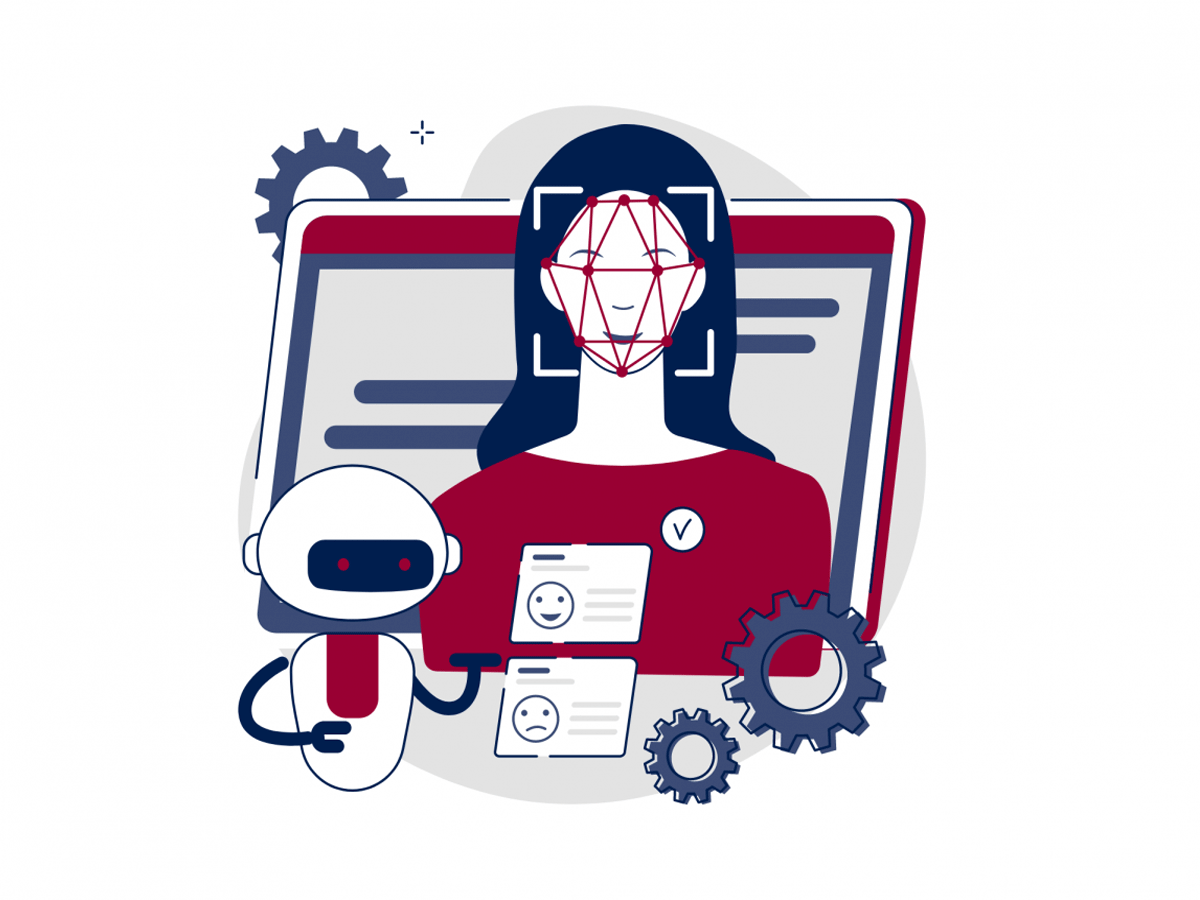In under a year, the AI-powered chatbot ChatGPT has forever changed the way of content creation. But the big questions on everyone's mind are: Will AI just make our jobs easier, or could it replace us? And if you do not like AI-generated content, can you trust AI detectors to detect content written by a human? Let me explain.
What is AI Content
AI, or artificial intelligence, is basically a computer's brain trying to mimic human smarts – understanding its surroundings, grasping context, and solving problems solo. Models like OpenAI's ChatGPT and Google Bard pull this off using two technologies: natural language processing (NLP) and machine learning.
NLP lets computers understand language like us, and machine learning lets them learn the ropes without specific programming for every task.

So basically, AI Detector is a tool that uses a huge amount of dataset of information to decide whether a text is genuinely human-written or AI-generated. There are tools for other graphic formats to understand those generated by AI. Right now, I'm gonna talk about mostly Text-based ones.
How do these tools identify AI content?
Most of the detectors use a combination of advanced machine learning and natural language processing to understand patterns; the AI Detector analyzes and gives predictions whether the Text is human-written or AI-generated.
Some AI detectors, like Crossplag, say they use a fine-tuned detection model, which is trained with a vast amount of data and more than 1.5B parameters.
But here's the problem with this: these detectors depend on the Text's patterns. Quality, language, and the volume of words are considered to give a result. Most of these tools work only in English because it is only fed with English language datasets.

Let's talk a bit more about Bias in AI Algorithms. Every algorithm has its own set of shades. The algorithm gets its view or bias from the data it's fed.
So, most of these AI detector companies claim when they train their AI content detector; they're on a mission for fairness – no favoritism, just pure objectivity. But if you read our Artificial Intelligence - Ethics Dilemmas & Potential Impact article, you already know it's not possible to make 100% non-biased AI.
Use Cases of AI Detectors
Most of the time AI content detectors get used in industries like online writing and blogging. Schools and Universities use these tools to detect assignments done by AI and prevent student plagiarism.
Some companies use these when they recruit people because they wanna make sure candidates put in the effort and don't just ChatGPT their way through it.
AI Detector Types

There are a few types of AI detectors available right now. Mainly most of these detectors go under these two categories.
- Text detection
- Image, video, and audio detection
Text detection
Text detection tools are the most famous AI detector tools in general. Mostly used to identify plagiarism. These types of tools look for repeated words and patterns.
But these detectors aren't perfect, and that's why you should never 100% rely on a detector tool.
There's a real-life story about tools making some unnecessary drama and wrongly accusing people of AI content. Two students from the University of California, Davis, nearly faced expulsion after being wrongfully accused. And Cambridge University and other members of the Russell Group of universities in the United Kingdom opted out of Turnitin's AI text detection tool after expressing concerns it was unreliable.
Image, video, and audio detection
Ever heard about AI-generated images and deepfakes? We discussed how some artificial intelligence programs could steal your voice, How DeepFakes are made, and these impacts.
There are tools and algorithms that can detect artificially made media files like images, videos, and audio. These tools can easily detect Midjourney or DALL-E outed media files. But again, the tech is still in its awkward teenage phase not fully reliable yet.
There are ways to put watermarks on AI-generated content, like the Google DeepMind project SynthID – a method to insert a digital watermark, invisible to the human eye, into image pixels.
So, here are the eight most accurate AI text detectors you can try.
GPTZero
- Built to help teachers detect AI-generated content
- Analyzes text to determine if written by humans or AI
- Provides perplexity and burstiness score
- Identified sentences labeled as AI-generated
- Offers a Batch File Upload feature
- Free plan with two paid plans available
Winston AI
- Claims 99.6% accuracy in detecting AI-generated content
- Detected human-written and AI text accurately
- Readability score and plagiarism available in paid plans
- Free trial with a limit of 2000 words
Content at Scale AI Detector
- AI text generator with an impressive detection tool
- Provides scores for probability, pattern, and predictability
- Highlights AI-written sentences
- A free tool with similar results as GPTZero
Originality AI
- Popular AI text detector for GPT 3, GPT 3.5, and ChatGPT
- Provides a percentage likelihood of human or AI generation
- Highlights potentially AI-generated sentences
- Paid detector with extra cost for plagiarism check
Writefull GPT Detector
- Aims to make academic writing easier
- Free GPT Detector with encrypted data for privacy
- Identifies content written by GPT-3 and ChatGPT
- Integration with Word and Overleaf available
- Hive Moderation Text Detection
- Detects AI text and AI-generated images
- Analyzes text accurately for AI content
- Free demo tool available without sign-up
Crossplag
- Plagiarism checker with AI detection tool
- Identifies the likelihood of AI-generated content
- Highlights specific sentences believed to be AI-generated
- Free AI detection tool, plagiarism detector in paid plan
AI Content Detector by Copyleaks
- Popular plagiarism detection tool with AI content detector
- Detects ChatGPT, GPT-3, and other language models
- Identifies content in other languages
- API and LMS integration available
How to avoid AI content detection tools?
Anti-text detection is the way to avoid these detection tools. Study in August 2023 at Magna Græcia University and the Royal College of Ophthalmologists. They put an AI detection tool named Originality.ai to test it detected GPT-4 with an accuracy of 91.3%. But when they used the Undetectable.ai tool, the accuracy nosedived to a mere 27.8%.
Taloni et al. researched 20 abstracts sourced from publications in the Eye Journal. These abstracts experienced paraphrasing with the assistance of GPT-4.0. They use QueText to check for plagiarism and Originality.
AI to check for AI-generated content. The texts were then re-processed through an adversarial software called Undetectable.ai to reduce the AI-detection scores.
But if you are planning to do this, I recommend you not to use the word jumblers like these. It will eventually destroy the content and sometimes the meaning of the content as well.
What is Google's E-E-A-T principle
Google's E-E-A-T principle is a set of guidelines that help quality raters evaluate the quality of search results. The acronym stands for Experience, Expertise, Authoritativeness, and Trustworthiness.
To avoid detection by these tools, don't use repetitive sentences. These tools might detect that repetition of keywords and sentences could wrongly identify your content as AI-generated, even if it's not.
Adding some personal experience to your content will prove it human and boost its search engine ranking as well, aligning seamlessly with Google's E-E-A-T principle.
Here are a few more tricks to avoid AI detection tools
Obfuscating Text
- Technique to bypass AI content detectors
- Involves altering and manipulating text
- Difficulty for detectors to accurately analyze and interpret
- Methods: use of synonyms, adding random words
Using Unicode Characters
- An effective strategy to bypass AI content detectors
- Replacing letters or symbols with visually similar Unicode characters
- Alters word appearance without changing meaning
- Important to stay updated on evolving AI systems
Adding Punctuation and Symbols
- Strategic use to bypass AI content detectors
- Insert non-standard characters in words, e.g., replacing 'o' with zero or 'a' with '@.'
- Maintain readability to avoid appearing spammy
Using Homoglyphs
- Technique to bypass AI content detectors
- Substituting letters or symbols with visually similar alternatives
- Difficult for AI to identify prohibited or flagged content accurately
- Combine methods for a comprehensive approach
Altering Word and Sentence Structure
- Tactic for evading AI content detectors
- Use of synonyms, antonyms, or rearranging sentence components
- Modifies writing to appear unique or bypass detection algorithms
Using Synonyms and Antonyms
- Bypassing AI content detectors through word replacement
- Replace words with equivalents or opposites
- Maintain readability and coherence to avoid appearing unnatural
Rearranging Sentence Syntax
- An effective technique to evade AI content detectors
- Change the order of words, phrases, or clauses in a sentence
- Sidesteps detection algorithms relying on specific grammar patterns
Changing Word Forms
- Technique to bypass AI content detectors
Manipulating Image and Audio Content
- A common technique to bypass AI content detectors
- Alter properties without changing overall content
- Exploits vulnerabilities of AI systems
Visual Camouflage Techniques
- Effective in bypassing AI content detectors
- Manipulates the appearance of image or video
- Techniques: image or video overlay, pattern disruption, strategic object placement
Audio Encoding Methods
- Crucial for bypassing AI content detectors
- Use of lossy compression algorithms, e.g., MP3 format
- Steganography hides audio within innocent data
- Steganography for Concealing Data
If your AI-generated paragraphs seem dull and mechanical, don't be shy to add some words from your mind and, correct grammar with Grammarly and remember to paraphrase your content humanly.
This not only enhances readability but also outsmarts most of the AI plagiarism checkers. And lastly, whatever your content is, check it with an AI plagiarism tool.












